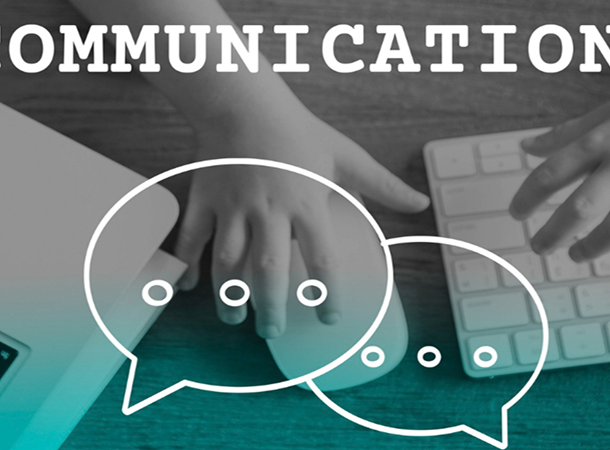
Close
Effective communication is vital for all teams, but it is particularly crucial for distributed teams with geographically dispersed members. In the absence of face-to-face interactions, distributed teams rely heavily on communication tools and strategies to collaborate, share information, and make decisions. Clear and open communication forms the foundation of successful teamwork and becomes even more critical when team members are not physically present in the same location.
In distributed teams, effective communication serves to bridge the gap between team members, ensuring alignment and shared goals. It also plays a key role in building trust and rapport among team members by fostering transparency and mutual understanding. Without effective communication, distributed teams may experience misunderstandings, misalignment, and a lack of cohesion, which can negatively impact productivity and work quality.
Consequently, it is essential for distributed teams to prioritize and invest in effective communication strategies to ensure their success.
Distributed teams face unique communication challenges due to the physical distance between team members. However, there are several strategies that can help overcome these challenges and facilitate effective communication. One such strategy is to establish regular communication schedules, such as daily check-ins or weekly meetings, to ensure that team members have dedicated time to connect and discuss important matters.
This helps to create a sense of routine and consistency, which is crucial for maintaining communication in distributed teams. Another strategy is to leverage various communication tools and technologies to facilitate real-time interactions and information sharing. Video conferencing, instant messaging, and project management platforms can help bridge the gap between team members and enable seamless communication.
Additionally, it is important for distributed teams to establish clear communication protocols and guidelines to ensure that everyone understands how and when to communicate, as well as what channels to use for different types of communication.
![]()
Technology plays a crucial role in facilitating communication in distributed teams. With the advancements in communication tools and platforms, distributed teams have access to a wide range of technologies that can help bridge the gap between team members and enable seamless interactions. Video conferencing tools, such as Zoom or Microsoft Teams, allow team members to have face-to-face meetings regardless of their physical location, fostering a sense of connection and collaboration.
Instant messaging platforms, such as Slack or Microsoft Teams, enable real-time communication and quick information sharing, making it easier for distributed teams to stay connected throughout the day. Project management tools, such as Asana or Trello, provide a centralized platform for team members to collaborate on tasks and projects, ensuring that everyone has visibility into the team’s progress and priorities. By leveraging these technologies, distributed teams can overcome the barriers of physical distance and facilitate effective communication.
Clear communication protocols are essential for ensuring that distributed teams have a common understanding of how to communicate effectively. These protocols should outline the preferred channels for different types of communication, such as using email for formal communications and instant messaging for quick updates. Additionally, they should establish guidelines for response times and expectations for availability, especially when team members are working across different time zones.
Furthermore, clear communication protocols should address the use of language and tone in written communications to ensure that messages are conveyed clearly and respectfully. By establishing these protocols, distributed teams can minimize misunderstandings and miscommunications, fostering a more cohesive and productive work environment.
Active listening and feedback are essential components of effective communication in distributed teams. Team members must actively listen to one another to ensure that they understand each other’s perspectives and concerns. This requires being present during virtual meetings, asking clarifying questions, and demonstrating empathy towards their colleagues.
Additionally, providing and receiving feedback is crucial for continuous improvement and growth within distributed teams. Team members should feel comfortable sharing their thoughts and ideas openly, while also being receptive to constructive feedback from their peers. By promoting active listening and feedback, distributed teams can foster a culture of open communication and collaboration.

Building trust and rapport is essential for the success of distributed teams, and effective communication plays a significant role in this process. When team members communicate openly and transparently, they build trust with one another, knowing that they can rely on each other to share information honestly and respectfully. This trust forms the foundation for strong working relationships within distributed teams.
Furthermore, effective communication helps to build rapport among team members by creating opportunities for casual interactions and personal connections. Virtual coffee chats, team-building activities, and informal check-ins can help foster a sense of camaraderie among distributed team members, despite the physical distance between them. By prioritizing open communication and creating opportunities for personal connections, distributed teams can build trust and rapport among their members.
Leadership plays a crucial role in fostering effective communication within distributed teams. Leaders must set the tone for open communication by modeling transparency, active listening, and constructive feedback. They should also establish clear communication protocols and guidelines to ensure that all team members understand how to communicate effectively.
Additionally, leaders should invest in building relationships with their team members by creating opportunities for virtual interactions and providing support for their personal and professional development. By demonstrating a commitment to open communication and building strong relationships within the team, leaders can create a culture of effective communication within distributed teams. This ultimately contributes to the success and productivity of the team as a whole.
If you’re interested in learning more about empowering your employees in a distributed team, check out this article on 10 Ways You Can Start Empowering Your Employees. It provides valuable insights on how to foster a positive and productive work environment for remote teams. Effective communication is just one aspect of creating a successful distributed team, and empowering your employees is equally important.
Distributed teams are groups of individuals working together on a project or task, but located in different geographical locations. They rely on technology to communicate and collaborate.
Effective communication is crucial in distributed teams to ensure that all team members are on the same page, understand their roles and responsibilities, and can collaborate efficiently despite being physically separated.
Challenges of communication in distributed teams include differences in time zones, cultural barriers, language barriers, reliance on technology, and lack of face-to-face interaction.
Strategies for ensuring effective communication in distributed teams include establishing clear communication protocols, using multiple communication channels, scheduling regular check-ins, fostering a culture of transparency, and providing training on effective virtual communication.
Tools that can aid communication in distributed teams include video conferencing platforms, instant messaging apps, project management software, file sharing platforms, and collaborative document editing tools.
Leaders can support effective communication in distributed teams by setting clear expectations, providing the necessary resources and tools, fostering a culture of open communication, and leading by example in their own communication practices.
Augmented Team Pvt Ltd
![[search_term]-in-[location]](https://augmentedteam.com/wp-content/uploads/2020/01/image-77.png)
![[search_term]-in-[location]](https://augmentedteam.com/wp-content/uploads/2020/01/Group-14983.png)